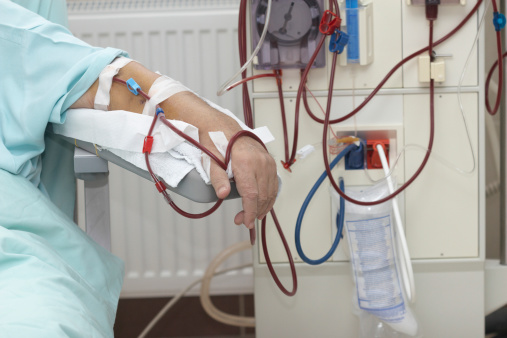The COVID-19 pandemic is making it extremely hard for patients who suffer from kidney failure to receive their weekly dialysis treatments. Nephrologists across the United States — including Northwestern Medicine’s Dr. Susan Quaggin — are calling for states to prioritize these patients to get the COVID vaccine, as well as the staff working in dialysis centers who provide this life-saving therapy.
“Our patients are unique because they have to travel – often on some form of public transportation — to get dialysis three times per week in order to live,” said Quaggin, director of the Feinberg Cardiovascular and Renal Research Institute at Northwestern University Feinberg School of Medicine and president of the American Society of Nephrology. “People on dialysis have limited ability to physically distance, heightened vulnerability to infection and poor outcomes if they are infected.”
Patients with kidney failure who receive dialysis have proven to be one of the most vulnerable groups of Medicare patients for hospitalization and mortality to COVID-19. In people receiving dialysis, mortality was 37% higher during April 2020 as compared to April of 2017, 2018 and 2019.
This increased mortality is attributed to documented SARS-CoV-2 infections, undocumented viral infections and decreased access to necessary non-dialysis-related medical care, Quaggin said.
More information on kidney failure, dialysis:
More than 800,000 people in the United States have kidney failure, with more than 550,000 receiving dialysis. People dependent on dialysis are extremely vulnerable to the effects of COVID-19, with COVID-associated mortality exceeding 20%, comparable to or even higher than COVID-associated mortality in long-term care facilities.
Dialysis patients are disproportionately under-represented minorities because of the burden of kidney disease in these populations (3.5 times higher in Black populations, 2.7 times higher in Pacific Islander and native Hawaiian populations, and about two times higher in Latinx and Native American populations), Quaggin said.
Patients need to begin dialysis treatment or receive a kidney transplant when they’ve lost about 85 to 90% percent of their kidney function. Dialysis works by removing waste, salt and extra water to prevent buildup in the body. It helps keep a safe level of certain chemicals in the blood, such as potassium, sodium and bicarbonate, and also helps control a person’s blood pressure.
Nearly 90% of people on dialysis in the United States receive their treatments at in-center dialysis facilities. These individuals typically go to dialysis facilities three times a week, where they are treated for, on average, just under four hours in each session. Their lives depend on their ability to receive dialysis treatments.


